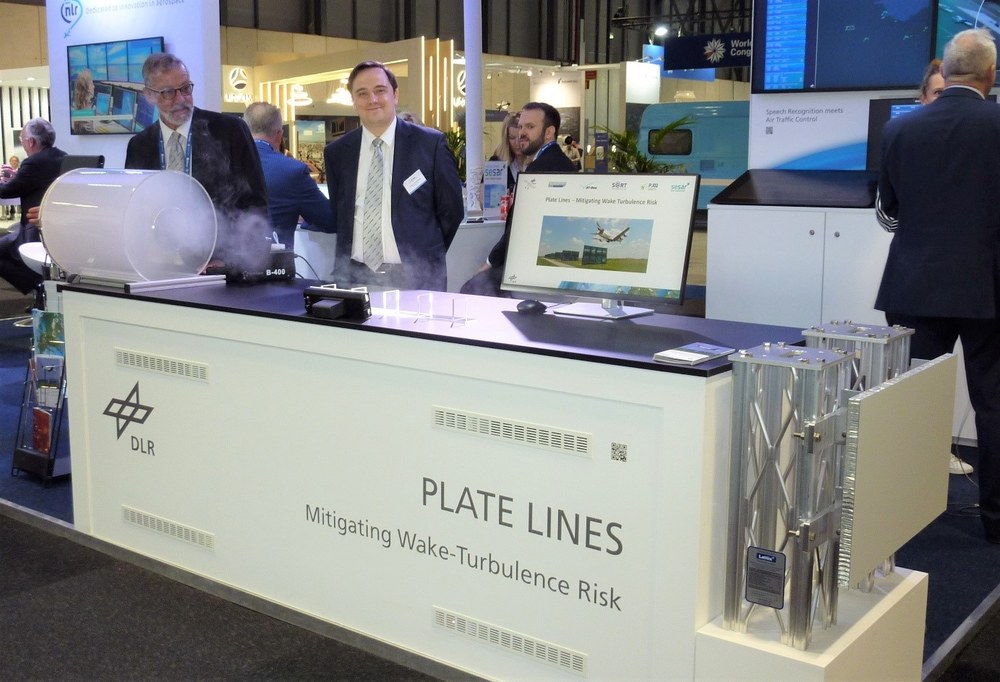Mitigation of wake-turbulence risks via plate lines presented at World ATM Congress in Madrid
The World ATM Congress in Madrid is the largest event in the field of air navigation and air traffic control. From June 21st to 23rd in Madrid, it combined a major exhibition with a conference. Several thousand specialist visitors from all over the world used this annual opportunity to familiarise themselves with the latest trends and developments in this field. The Institutes of Flight Guidance and the Institute of Atmospheric Physics together with the Netherlands Aerospace Centre (NLR) exhibited current research projects at their common AT-One booth for the air traffic control of the future.

The Institute of Atmospheric Physics showcased how the lifetime of wake vortices can be substantially reduced during final approach by the installation of so-called plate lines. Plate lines consist of a series of parallel plates with 4.5 m height installed in front of the runways. The plates mitigate the risk of wake vortex encounters and can contribute to increase the runway throughput capacity. Details can be found in the Plate Line White Paper.

A vortex generator served as eyecatcher directing vortex rings on a plate line model leading to swift vortex decay. Experts were briefed about the potential of the plate line concept using a slide show. Here the acceleration of wake vortex decay by up to 37% and the increased runway throughput potential for four plate line use cases were of particular interest. For the first time an exhibit showed the relevant design elements of a plate as it shall be installed at runways in the future.
Further information on the exhibits and the research topics can be found on the Website of AT-One.
References
- Frank Holzäpfel, Anton Stephan, Grigory Rotshteyn, Stephan Körner, Norman Wildmann, Lothar Oswald, Thomas Gerz, Günther Borek, Alexander Floh, Christian Kern, Markus Kerschbaum, Roman Nossal, Johannes Schwarzenbacher, Martin Strobel, Lukas Strauss, Clemens Weiß, Sebastian Kauczok, Christian Schiefer, Harald Czekala, Gerrit Maschwitz, Igor Smalikho, Mitigating Wake Turbulence Risk During Final Approach via Plate Lines, AIAA Journal, Vol. 59, Issue 11, pp. 4626-4641, 2021, https://doi.org/10.2514/1.J060025.
- Frank Holzäpfel, Dennis Vechtel, Grigory Rotshteyn, Anton Stephan, Plate lines to enhance wake vortex decay for reduced separations between landing aircraft, Flow: Applications of Fluid Mechanics, Vol. 2, E6-1 – E6-26, 2022, https://doi.org/10.1017/flo.2021.16.
- https://www.sesarju.eu/projects/SORT
- https://www.linkedin.com/company/sesar2020-vld3-wave-2-sort/
